
Filling Up the Thanksgiving Plate: Preferences Around Traditional Thanksgiving Dishes
November 20, 2023
Empathy in Shades: Understanding Diverse Views on the Israel-Hamas Conflict
November 29, 2023Stay on the Sidelines or Take an Active Role: Views on U.S. Involvement in the Israel/Palestine Conflict

For nearly two months, all eyes have been on the Middle East as Israel and Hamas have been at war with each other. The conflict between the Israelis and the Palestinian militant group could be considered a new conflict. Still, many historians believe it is just the latest chapter in the ongoing Israel/Palestine conflict that can be traced back to the mid-nineteenth century.
This latest chapter has increased support for both Israel and Palestine since October. In our recent round of research-on-research, we wanted to better understand people’s perspectives of the conflict and whether the United States should get involved.
Overall, there is a predominant belief that the U.S. should not get involved in the Israel-Palestine conflict, with nearly half of the respondents (46%) expressing this view. A significant portion, 30%, remains uncertain, indicating considerable indecision on this issue. In contrast, only about one in every four people (24%) believe the U.S. should be involved.

Gender
Gender differences reveal distinct attitudes toward U.S. involvement in the Israel-Palestine conflict. Males are 9% more likely than females to think the U.S. should get involved and simultaneously 7% more likely to believe the U.S. should not be involved. This dual tendency indicates a stronger inclination among males to have a definitive stance. In contrast, females exhibit a higher level of uncertainty or neutrality, being 15% more likely than males to be undecided or not have an opinion.
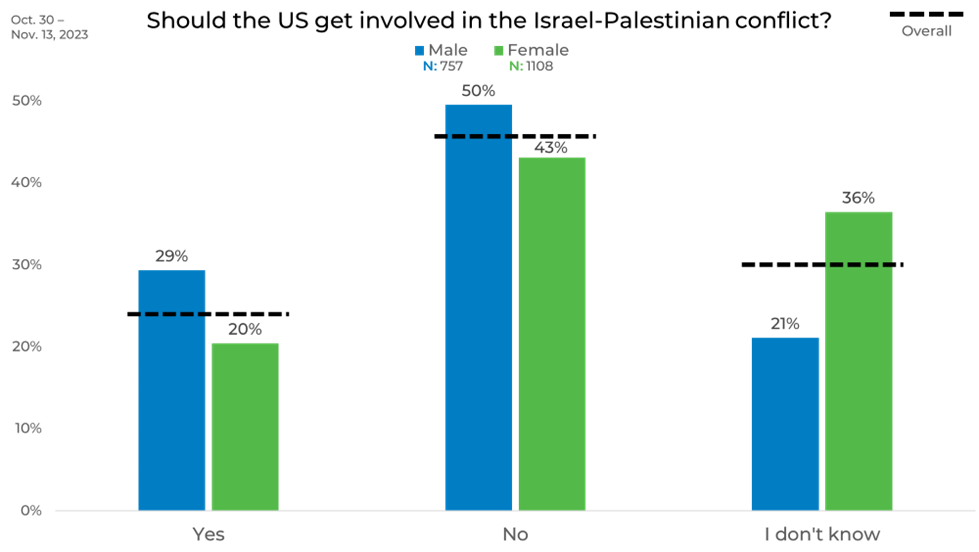
Age
Age has a notable impact on perspectives regarding U.S. involvement in the Israel-Palestine conflict. There’s a consistent view across the 18-64 age range, with about one in every four people believing the U.S. should get involved. However, those aged 65 and older are 5% more likely than the younger age groups to support U.S. involvement. In contrast, the 35-44 age group strongly opposes U.S. involvement. There is a trend towards opposition to U.S. involvement, starting with the 18-24 age group, peaking at ages 35-44. This trend reverses for those aged 45-64, with older individuals less likely to oppose involvement.
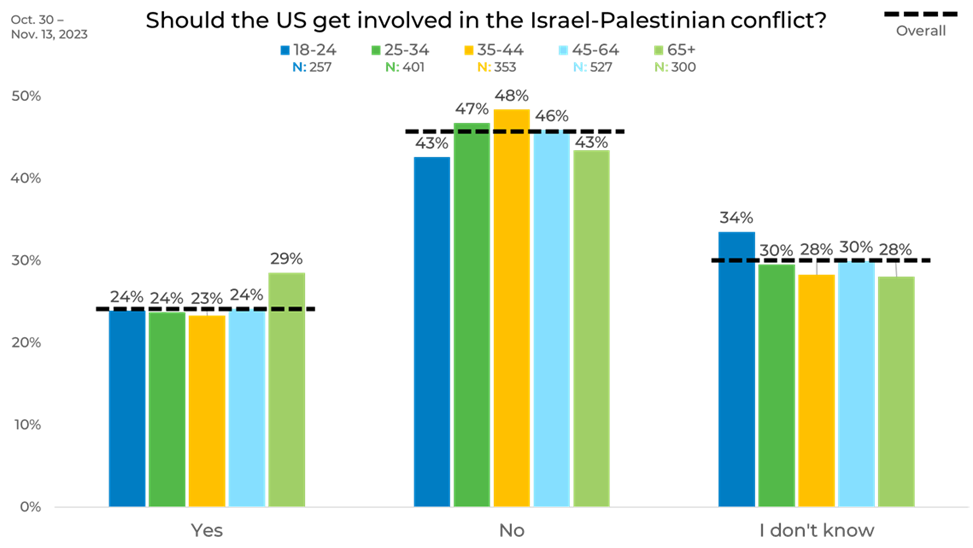
Income
Income levels play a significant role in shaping opinions on U.S. involvement in the Israel-Palestine conflict, where the higher the income group, the more likely they are to believe the U.S. should get involved. Conversely, individuals earning under $20,000 are the least likely to support U.S. involvement, with only 19% in favor, and those earning between $60,000 and $99,999 are most likely to be against it, with 50% holding this view.
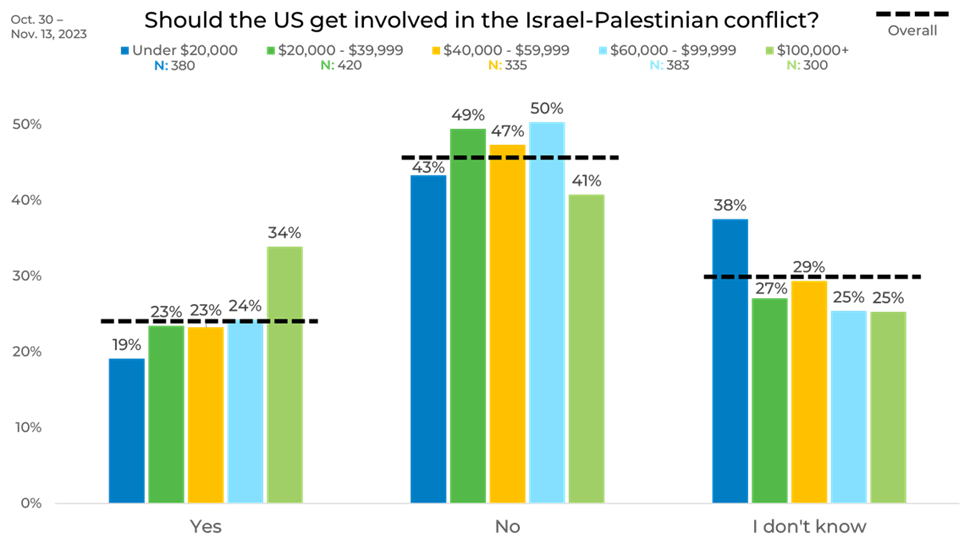
Political Affiliation
Political affiliations significantly influence opinions on U.S. involvement in the Israel-Palestine conflict. Republicans are the most likely to support U.S. involvement, with 30% in favor, marginally higher (2%) than Democrats. Independents are more cautious, being 8% less likely than Democrats and 10% less likely than Republicans to advocate for U.S. involvement. However, the variance is narrower (7%) for those opposing U.S. involvement, with Independents being the most likely to hold this view.
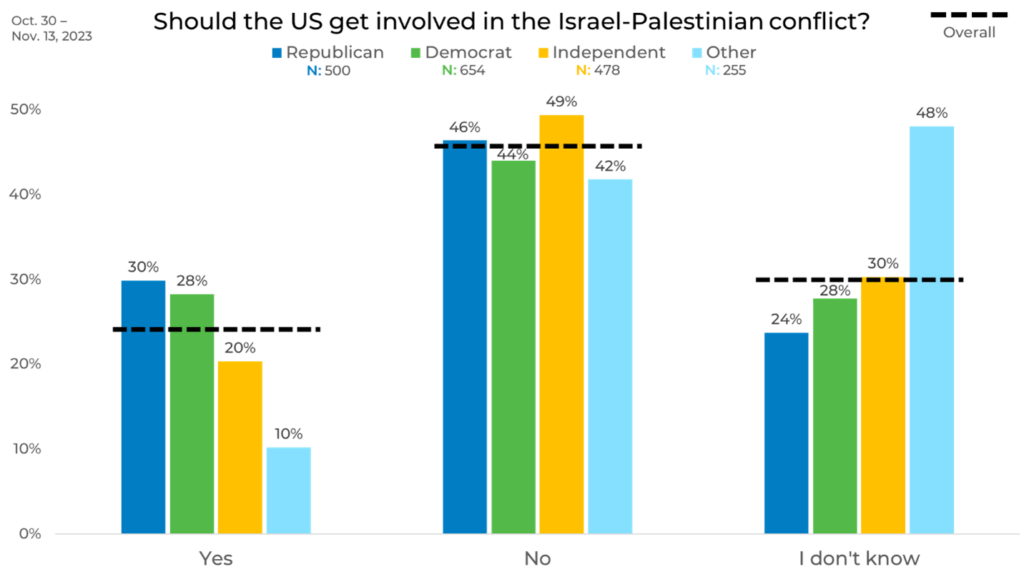
Ethnicity
Ethnic background significantly shapes viewpoints on U.S. involvement in the Israel-Palestine conflict. Asians or South Asians are most likely to support U.S. involvement, with 28% favoring this stance. On the other hand, respondents from ‘Other’ ethnic backgrounds are the least likely to think the U.S. should get involved. African Americans are most inclined to oppose U.S. involvement, with a notable 49% against it, closely followed by Hispanic/Latino respondents at 47%.
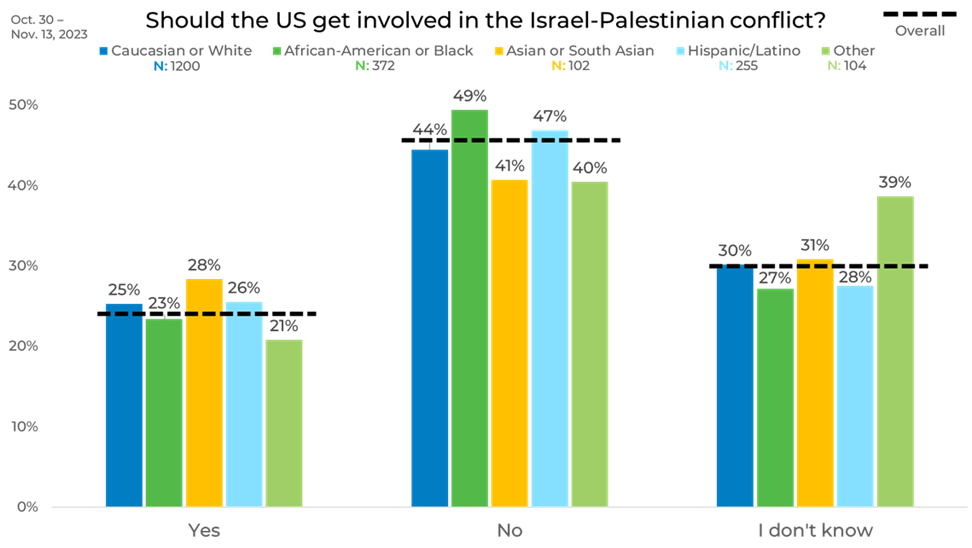
Region
The survey indicates only minor variances in responses across different U.S. regions regarding the Israel-Palestine conflict. There is a 2% variance in respondents who think the U.S. should get involved, a 4% variance for those opposed to U.S. involvement, and a 3% variance for respondents uncertain about U.S. involvement.
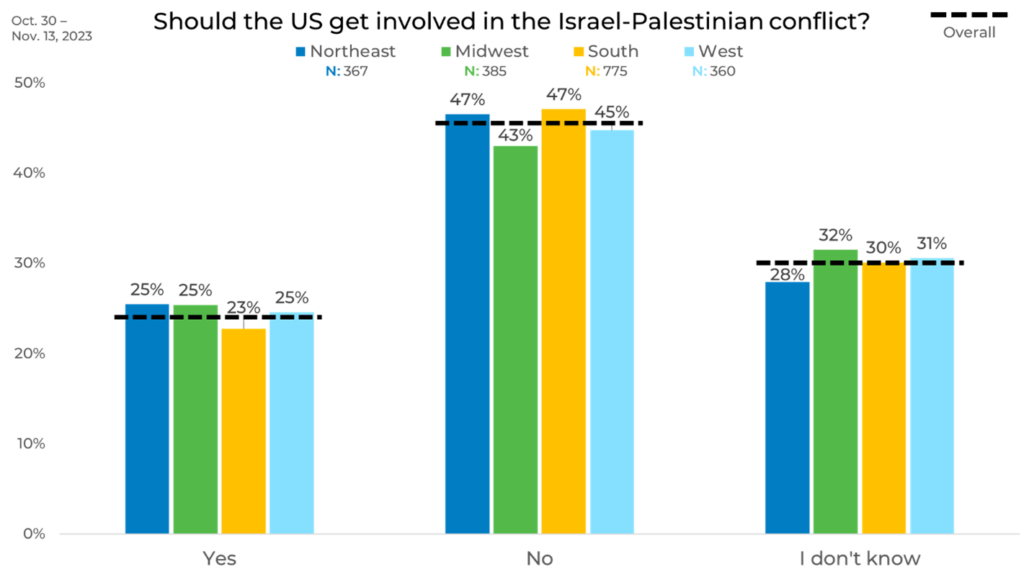
Panel
Opinions vary notably across different panels regarding U.S. involvement in the Israel-Palestine conflict. Panels A and C show the strongest support for U.S. involvement, each with 27% of respondents in favor. In stark contrast, Panel B exhibits the highest opposition, with 54% believing the U.S. should not get involved. A significant disparity between Panels E and B can be observed, where Panel E is 23% more likely to be uncertain than Panel B.
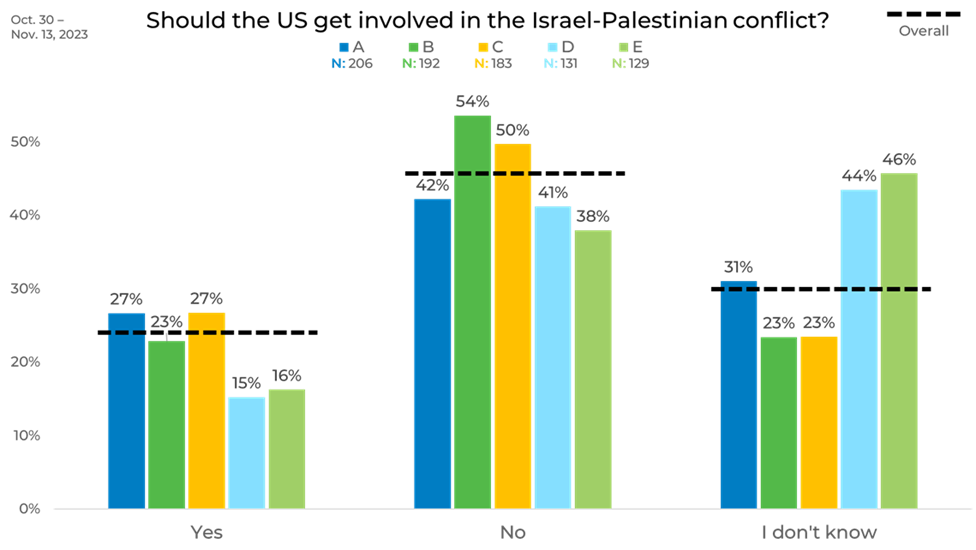
As you can see, attitudes can vary significantly by both demographic and panel. This can have a significant impact on your data. For instance, if someone used Panel A and Panel C for their research, their results would be significantly higher if they had used Panel D and Panel E – possibly leading to a different insight or decision. Similarly, if Panel B and C were used, there would be a different result than if Panel E was used. This is why strategic sample blending is the best practice to ensure any changes in your data are due to shifts in the market, not any biases individual panels may have.
Learn more about panel differences in our annual report on the sample industry, The Sample Landscape: 2023 Edition.
